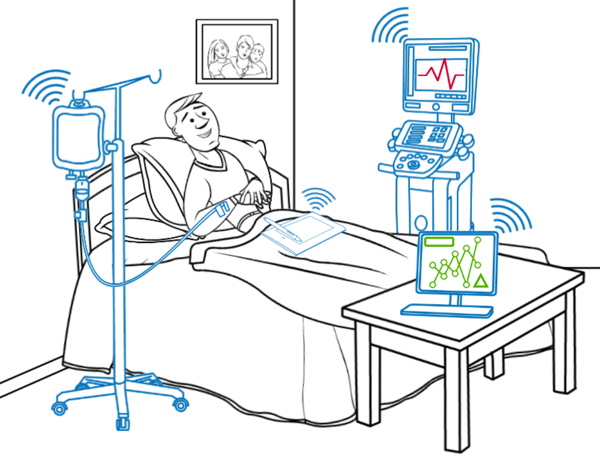The Need for Wireless Medical Devices
Smart home devices allow users to control almost all aspects of the home such as lighting, heating, entertainment, and more. As smart device technology continues to advance, the wireless medical device market is experiencing a rapid growth. Smart home devices can be anything from patient monitoring systems to applications for patient data access. Currently, there are 12 million people in the United States who receive home health care services, 70% of which are over the age of 65. According to the United Nations (UN), by 2050, the world population of persons over the age of 60 is expected to double while the population of persons over 80 is expected to triple.* With such a high increase in the older population within the next 30 years, there will be an increased need for healthcare - especially within the home. Smart home healthcare innovations will not only make patients’ lives more convenient, but also increase the quality of healthcare and overall patient well-being.

Benefits of Wireless Medical Devices
Easy Access to Patient Data
Caregivers can monitor their patient's health status and retrieve patient data on handheld devices in real time. This allows for constant monitoring, but eliminates the need for a caregiver to be present around the clock.
Less Invasive Healthcare
Smart home medical devices allow for less invasive monitoring and treatment of common diseases. For example, a device that monitors glucose levels can be implanted in a diabetes patient.
Minimises Outpatient Visits
Since patients can be monitored remotely, outpatient visits with a healthcare provider are greatly reduced. This helps to minimise risk and possible injury associated with patient mobility while also saving the expense of transportation to appointments.
Saves Hospital Space
Since monitoring and treatments can be administered remotely, patients will make fewer trips to the hospitals. This helps free up valuable hospital space for emergency patients.
Patient Privacy
With patient data being transferred through these devices, manufacturers will be forced to implement strong cyber security measures and encrypted data protection. Devices will be constructed with the security by design principle to combat against possible cyber security vulnerabilities.
Wireless Medical Devices Provide Enhanced Quality of Life
The growth of medical devices in the smart home provides a better quality of life for patients. Healthcare professionals are able to remotely monitor patient status, therefore requiring less invasive medical treatments for the patient while also negating hospital visits. This allows patients to receive the same healthcare, but from the comfort of their own homes.
As the elderly population increases and the smart home market continues to grow, the demand for smart home medical devices will surely rise as well. For manufacturers planning on designing medical products for the smart home, there are many standards and regulations that must be followed to ensure safety and functionality.

For more information, speak with our experts:




